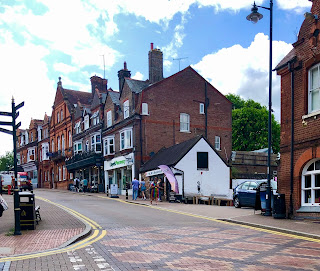People have been relocating since the beginning of time; human migration is not only a recent endeavor. We move for economic and professional reasons, following loved ones and seeking more opportunities or a better quality of life. I, myself, have changed addresses dozens of times. Looking back I see that it was my grandparents who started this trend.
My grandmother, recently widowed, was forced to take up a position as a housekeeper in Kent and send her boys away to boarding school. My father received a grant for an elite school that was a fast track to Oxford University. There he studied Latin and Arabic and began to envisage a life abroad exploring new cultures and unwritten languages.
My grandfather moved from shopkeeping in the north of England to take up a position of Head of China Missions in London. My mother, still at school, benefitted from a higher level of education and meeting all the missionaries who stayed in the house between visits abroad. My grandfather, himself, traveled extensively throughout the world and especially China, before there were hotels and airports. It is no wonder that my parents met and immediately sailed to South America, giving birth to my eldest brother on the way. I was born and brought up in Brazil, with only occasional visits and holidays with family in England. As I grow older, and with nostalgia, I have begun to look back and visit the places I come from: my roots.
I took my family back to Rio, where I was born, but did not get a sense of returning. I have no family there since my parents merely stopped over there on their way back to the UK via New York. The city of Rio is big and a stressful place to bring up three little boys. I also went back to the interior of Brazil where my parents had taken me on their trips to work with a tribal language. It was nice to see some of the people who knew me as a child, but the heat and hard sleeping surface made me long for the comforts of home. I see why I moved to the first world where there is AC and fewer cockroaches.
Yesterday, however, really felt like I was rediscovering my roots. My brother drove me down to Kent to visit my father's grave. He loved the area of Seasalter, near Whitstable, where the seawall holds back the water from the flat land for sheep to graze and a refuge for birds. It made sense to lay him to rest among the birds he loved. Years later he was joined by his brother and sister-in-law, who had lived close by. And more recently, my mother was buried along side my father. We put flowers on the freshly dug grave and then wandered around the graveyard and the tiny church that is mentioned in the Dooms Day Book as far back as 1086. I found another Taylor grave stone, so old and weatherworn that it could hardly be read: "Phyllis Taylor", my great aunt. Her watercolors, along with those painted by my uncle, hang on the walls of my Minnesota home. The grave stone was leaning slightly, falling forward and obscuring the name of another Taylor, "Bessie Taylor", as my grandmother was known. A newer plot, without a headstone yet, marked the resting place of my cousin. I could have stayed longer, but the church was locked and it began to rain... just to be with family!My brother and I continued on to Tankerton, a seaside village where my cousins had grown up. The great old house has now changed owners and is being renovated. We walk down St.Annes Road to the sea front "just to see if the sea is still there", as my aunt always said. It was, flat and calm and exactly as I remember it from previous visits. As if following family tradition, we ate our sandwiches for lunch while watching the seagulls fly and cry.
One cousin still lives nearby, in the city of Canterbury, and we used her house for parking.
Canterbury is now a buzz with foreign tourists, but still stands for a time when kings ruled and competed for power with the church. The priest Thomas a Becket was murdered in the Cathedral by Henry II; and another King Henry, the VIIIth, closed down the monastery and sent the monks packing. The ruins of the monastery are still there along with a herb garden that needed some weeding. The tomb of the Black Prince occupies a prominent position in the cathedral although he was known for his brutality. The cathedral has stood for a millennium and a half, survived fires and world wars, enshrining our heritage.... my heritage.After the cathedral we stopped in a coffee shop and ordered, not coffee, but cream teas. It might have been my American accent, but the server heard "green teas". He looked baffled when I corrected him.... he obviously doesn't know about my roots.



































